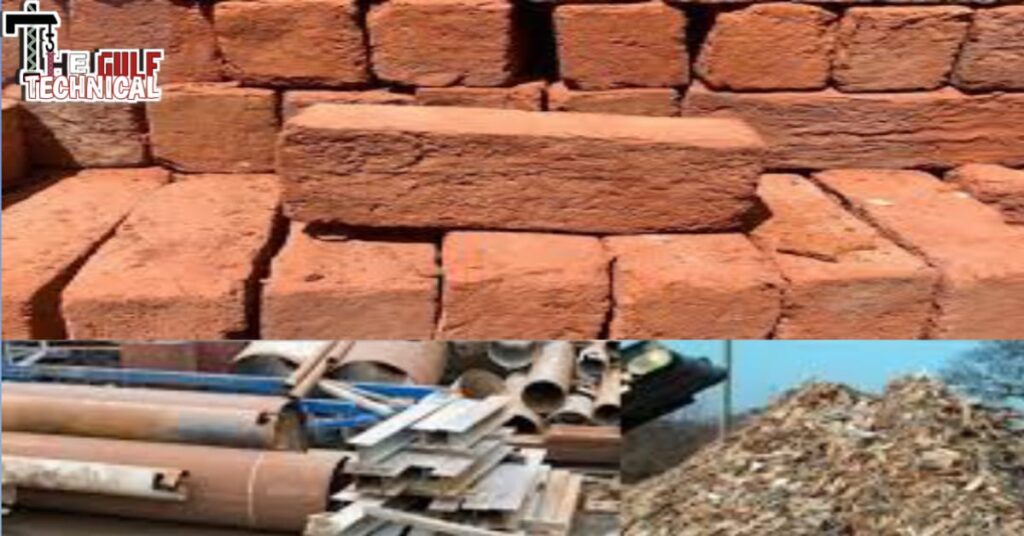Effective material management is a critical aspect of construction site projects, directly impacting cost, time, and sustainability. Every material used on-worksite comes with certain allowable wastage limits as per the Indian Standard (IS) codes. These limits are set to ensure optimal utilization while minimizing waste, helping construction site professionals maintain efficiency.
Here’s a detailed breakdown of the allowable wastage limits for key construction work place materials:
- Cements
Description: Cement is the binding material that holds everything together in concrete. It’s crucial in RCC, plastering, and other cement works.
Allowable Wastage: 2-3% (IS 4926:2003)
Explanation: Wastage in cement mainly occurs during storage and handling, as well as due to spillage while mixing.
- Steel and Metal (Reinforcement)
Description: Steel and metal reinforcement provides tensile strength to concrete structures, used in beams, slabs, and columns.
Allowable Wastage: 2-3% (IS 1786:2008)
Explanation: Wastage generally occurs due to cutting, bending, rusting, and loss during transportation.
- Aggregates (Coarse & Fine Volume)
Description: Aggregates are essential for concrete and mortar. They provide volume stability and resistance to wear in the final structure.
Allowable Wastage: 5% (IS 383:2016)
Explanation: Wastage in aggregates occurs due to handling, transportation, and improper storage, leading to losses in quality and quantity.
- Bricks & Blocks
Description: Bricks and blocks are the fundamental building units in masonry works, such as walls, foundations, and partitions.
Allowable Wastage: 2.5% for bricks, 5% for blocks (IS 1077:1992)
Explanation: Wastage happens due to breakage during heavy transport, handling, or improper stacking on-worksite.
- Tiles & Marble Stone
Description: Used for flooring, cladding, and finishing work, tiles and marble add aesthetic value and durability to the structure.

Allowable Wastage: 8-10% (IS 1237:2012 for tiles, IS 1130:1969 for marble)
Explanation: Wastage is common due to cutting, breakage during installation, and chipping.
- Timber/Plywood and Shuttering Material
Description: Shuttering and formwork materials, primarily timber, are used to meld and support concrete while it sets.
Allowable Wastage: 10-15% (IS 4990:2011)
Explanation: Highly wastage occurs due to frequent reuse, damage, and wear-and-tear on site.
- Electrical & Plumbing piping Materials
Description: Includes conduits, wires, pipes, and fittings required for electrical and plumbing works.
Allowable Wastage: 3-5%
Explanation: Wastage happens due to cutting, installation errors, and leftover scrap materials.
Important Key Takeaways:
Adhering to these IS codes helps minimize wastage, control site costs, and promote resource efficiency.
Construction projects involve meticulous planning, precise execution, and efficient resource management. One crucial aspect of resource management is understanding allowable wastage of construction materials. In India, the Indian Standards (IS) Code provides guidelines for permissible wastage limits. Let’s delve into the world of construction materials and explore the significance of allowable wastage.
What is Allowable Wastage?
Allowable wastage refers to the permissible percentage of construction materials that can be wasted or lost during handling, storage, and usage. This wastage can occur due to various factors, including:
- Handling damage
- Cutting and trimming
- Spillage
- Pilferage
- Natural factors (e.g., weather conditions)
Importance of Allowable Wastage
Understanding allowable wastage is vital for:
- Cost estimation: Accurate wastage calculation helps top management civil engineers and project managers estimate material requirements, reducing costs and minimizing waste.
- Resource optimization: By minimizing wastage, contractors can optimize material usage, reducing environmental impact and conserving resources.
- Quality control: QC team Monitoring wastage helps ensure that materials are handled and stored properly, maintaining their quality.
IS Code Guidelines for Allowable Wastage
The Indian Standards Code provides guidelines for allowable wastage percentages for various construction materials. Some key materials and their permissible wastage limits are:
- Cement: 1.5% to 2.5% (IS 456:2000)
- Steel: 2% to 5% (IS 1786:2008)
- Bricks: 5% to 10% (IS 3495:1992)
- Aggregates: 2% to 5% (IS 2386:1963)
- Timber: 5% to 10% (IS 1149:2013)
Key Factors Influencing Allowable Wastage
- Material type: Different materials have varying wastage rates due to their characteristics and handling requirements.
- Handling and storage: Proper handling and storage techniques minimize wastage.
- Project complexity: Complex projects may require more precise wastage calculations.
- Location and climate: Environmental factors, such as weather conditions, can impact wastage.
Best Practices to Minimize Wastage
- Material planning: Accurate material estimation and scheduling.
- Proper storage: Secure, dry, and organized storage facilities.
- Handling training: Educate workers on proper material handling techniques.
- Regular monitoring: Track material usage and wastage.
Conclusion
Understanding allowable wastage is crucial for efficient construction project management. By following IS Code guidelines and implementing best practices, contractors can minimize wastage, reduce costs, and optimize resource usage. Remember, every percentage point saved contributes to a more sustainable and profitable construction industry.
Important Words:
- Allowable wastage
- Indian Standards (IS) Code
- Material planning
- Resource optimization
- Quality control
- Cost estimation
- Handling damage
- Pilferage
- Natural factors
- Sustainable construction